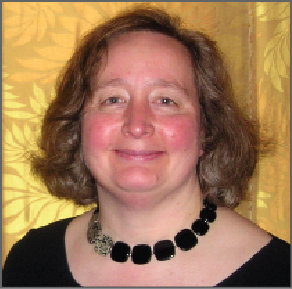Sara Shayegi, Hess Corp Reservoir background puts new spin on drilling
By Linda Hsieh, managing editor

There are two kinds of people in the world – those who want to know why and how something works, and those who don’t care “why” or “how” as long as it works. Sara Shayegi, EPT technical adviser for Hess Corp, falls squarely into the first category.
After getting a petroleum engineering degree from Louisiana State University (LSU) in 1988, Ms Shayegi decided that she hadn’t fulfilled her curiosity about the why’s and how’s of the petroleum world. She wanted to know, for example, exactly why things work the way they do in the reservoir and how pressure and temperature and fluids work on the most basic level. So she spent a few more years in school, first completing a study program at the Institut Francais de Petrole, then finishing a research fellowship on enhanced oil recovery at LSU.
Over the course of her doctorate, Ms Shayegi became interested in finding ways that could optimize hydrocarbon recovery from the first instance of reservoir contact. When she heard about a JIP that was under way at Cenpes, the Petrobras Research Center, on underbalanced drilling, this piqued her curiosity. “I was able to get the name of the person who was heading the JIP and asked if I could come and work for three months,” she said.
After three months, Petrobras hired her to continue working on the JIP at Cenpes. It was here that Ms Shayegi started researching multiphase flow, hydraulic models, and steady-state and transient modeling and gaining experience with managed pressure drilling (MPD) and underbalanced drilling (UBD).
The JIP eventually resulted in Petrobras being able to test testing a gasified fluid for a short interval from the P-17 semi platform, on well Albacora 64H offshore Brazil in December 2000. However, by that time, Ms Shayegi had already moved on to Impact Engineering Solutions, which later developed the Secure Drilling MPD system.
Due to her background in reservoir and underbalanced drilling, Ms Shayegi started working for Halliburton on their Real-Time Reservoir Evaluation system, which allows reservoir characterization of the formation while drilling. This work evolved to include development of analytical and numerical reservoir models, neural nets for prediction of missing data, lag time synchronization and field implementation. Not withstanding the benefits of UBD, there are implementation and cost challenges that must be overcome. Near-balanced drilling, or MPD, addresses some of the problems previously addressed by UBD, with less complexity and cost; Ms Shayegi worked with the development team to address this area prior to leaving Halliburton.
In September 2009, she was offered her current position as part of Hess’ E&P technology group, which was tasked with implementing new technologies in the company’s worldwide assets. A significant portion of this job is conducting engineering and feasibility studies for MPD/UBD.
With underbalanced drilling, Hess has begun using the technique as a way to characterize the horizontal section of the well. “In a conventional well test, there are a lot of assumptions you make when you do the analysis. (With UBD), you know where the production is coming from, so you can get the productive length that is a known, along with other formation properties,” she said.
Ms Shayegi believes that one sticky issue may have to be resolved before UBD will become widely accepted, and that is cost – not how much but where to fit it the overall budget. “I think the value is primarily for the assets and reservoir folks in terms of production uplifts and reservoir characterization. There has to be a sharing of the cost of implementation. Right now it’s on the drilling AFE. The real place it needs to reside is a combination of the drilling AFE and assets so that (UBD) makes sense economically.”
Whereas UBD is not a “slam-dunk” technology because of its complexity and cost, she said, MPD is definitely the wave of the future. “It’s not a big step from conventional drilling,” yet it can provide significant advantages as far as being able to react faster to potential drilling problems, she said.
Some issues still need to be addressed, however. One is equipment reliability. “RCDs (rotating control devices) are working fine on land, but for offshore I think there needs to be more work done on reliability, especially for floater operations,” she said. She sees innovation in this area as a component in a system for improved safety in deepwater drilling.
Training is another critical challenge. “When you do managed pressure drilling, the crews need to have a certain level of understanding of drilling concepts, and that’s going to take a bit of time. I also think that’s part of the role of IADC, in terms of defining what training is required, what simulations they need to do or what kind of WellCAP (certification) they need.”
For the longer-term future, Ms Shayegi believes that the drilling and reservoir segments must work together to increase recovery rates. “I’d like to see the implementation of a combination of enhanced oil recovery techniques with optimized drilling methods that would maximize the final recovery from wells. The ideal solution would allow this to be done with minimal environmental impact.”




